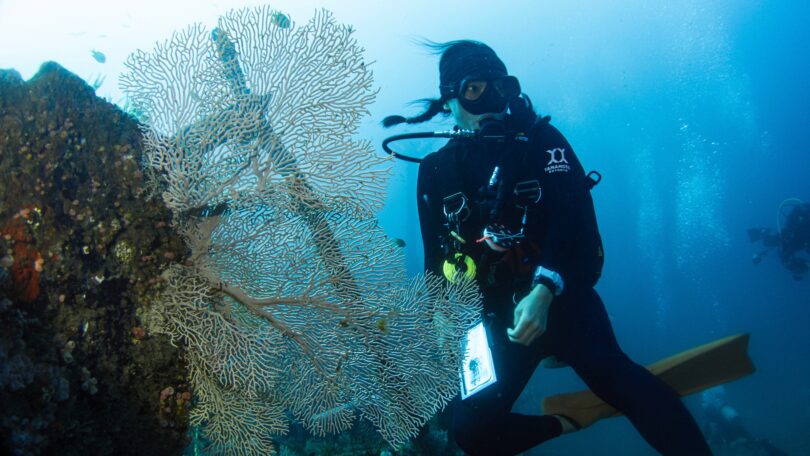The ocean is an astonishing element of our world, accounting for over 70% of its surface area and sustaining a diverse range of creatures. However, there is something quietly alarming going beneath the waves: ocean acidification. You may not have heard of it, yet it is a big concern for marine life and the health of our seas. In this blog, we will discuss ocean acidification, how it affects marine life, and what may be done to help.
What Is Ocean Acidification?
Ocean acidification happens when the ocean absorbs more carbon dioxide (CO2) from the atmosphere than normal. While the ocean has always absorbed CO2, rising levels of greenhouse gasses from human activities (such as fossil fuel combustion) are causing the ocean to become more acidic.
This acidification process occurs when CO2 reacts with water to produce carbonic acid. As a result, the pH of seawater falls, making it more difficult for marine creatures—particularly those that rely on calcium carbonate (such as corals and shellfish)—to construct their shells and skeletons.
How Does Ocean Acidification Affect Marine Life?
Ocean acidification affects marine life in a variety of ways, with far-reaching implications. Let’s look at some of the species that have been most affected.
Coral Reefs
Coral reefs are often called the “rainforests of the sea,” and for good reason. They support about 25% of all marine species. However, when ocean water becomes more acidic, it makes it more difficult for corals to build their skeletons. This leads to weaker, slower-growing reefs. Since many marine creatures depend on coral reefs for food and shelter, their decline threatens the entire ecosystem.
Shellfish
Shellfish like oysters, clams, and mussels are particularly vulnerable to acidification. These creatures rely on calcium to form their shells, and when the ocean becomes more acidic, they struggle to build strong, healthy shells. This affects the fishing industry and the communities that rely on shellfish farming. It also impacts human diets, as shellfish are an important source of nutrition worldwide.
Plankton
Plankton might be tiny, but they are crucial for ocean food webs. Certain types of plankton, like phytoplankton, also rely on calcium to build their shells. As the ocean becomes more acidic, plankton populations are affected, which has a knock-on effect on the larger marine animals that depend on them for food, such as fish and whales.
Why Should We Care About Ocean Acidification?
Ocean acidification isn’t just an environmental issue—it’s also an economic and human issue. Many coastal communities rely on the ocean for food, income, and even tourism. If ocean acidification continues at its current rate, the fishing and shellfish industries could be severely impacted. Beyond that, the loss of marine biodiversity due to acidification can lead to a decline in ecosystem services that we all benefit from, like climate regulation and food sources.
What Can We Do to Combat Ocean Acidification?
There are several actions we can take to slow down or reverse the effects of ocean acidification. Let’s explore what can be done:
1. Reduce CO2 Emissions
The root cause of ocean acidification is the increase in CO2 in the atmosphere. By reducing our carbon emissions—through using renewable energy, cutting down on fossil fuel consumption, and making more sustainable lifestyle choices—we can reduce the amount of CO2 the oceans absorb. Every effort counts in reducing our carbon footprint.
2. Support Marine Conservation Efforts
Marine protected areas (MPAs) are designated zones where marine ecosystems are safeguarded from harmful human activities. Supporting the creation of more MPAs can help marine life adapt to changing conditions. You can contribute by supporting conservation organizations that focus on protecting our oceans, like the Ocean Conservancy or the Marine Conservation Society.
3. Keep Learning and Raising Awareness
Understanding the issue is the first step toward change. By educating ourselves and others about ocean acidification, we can raise awareness and inspire more people to take action. If more people know about the problem, we can push for stronger policies and greater investments in ocean health.
4. Advocate for Policy Changes
Governments and corporations play a crucial role in combating ocean acidification. Supporting policies that reduce CO2 emissions and protect marine ecosystems can help us tackle this issue on a larger scale. By getting involved in environmental advocacy, we can make a real difference.
Conclusion
Ocean acidification is a growing issue, but it’s not too late to act. By reducing our carbon emissions, supporting marine conservation efforts, and raising awareness, we can help protect the health of our oceans. Our oceans play a crucial role in sustaining life on Earth—let’s work together to preserve them for future generations.









